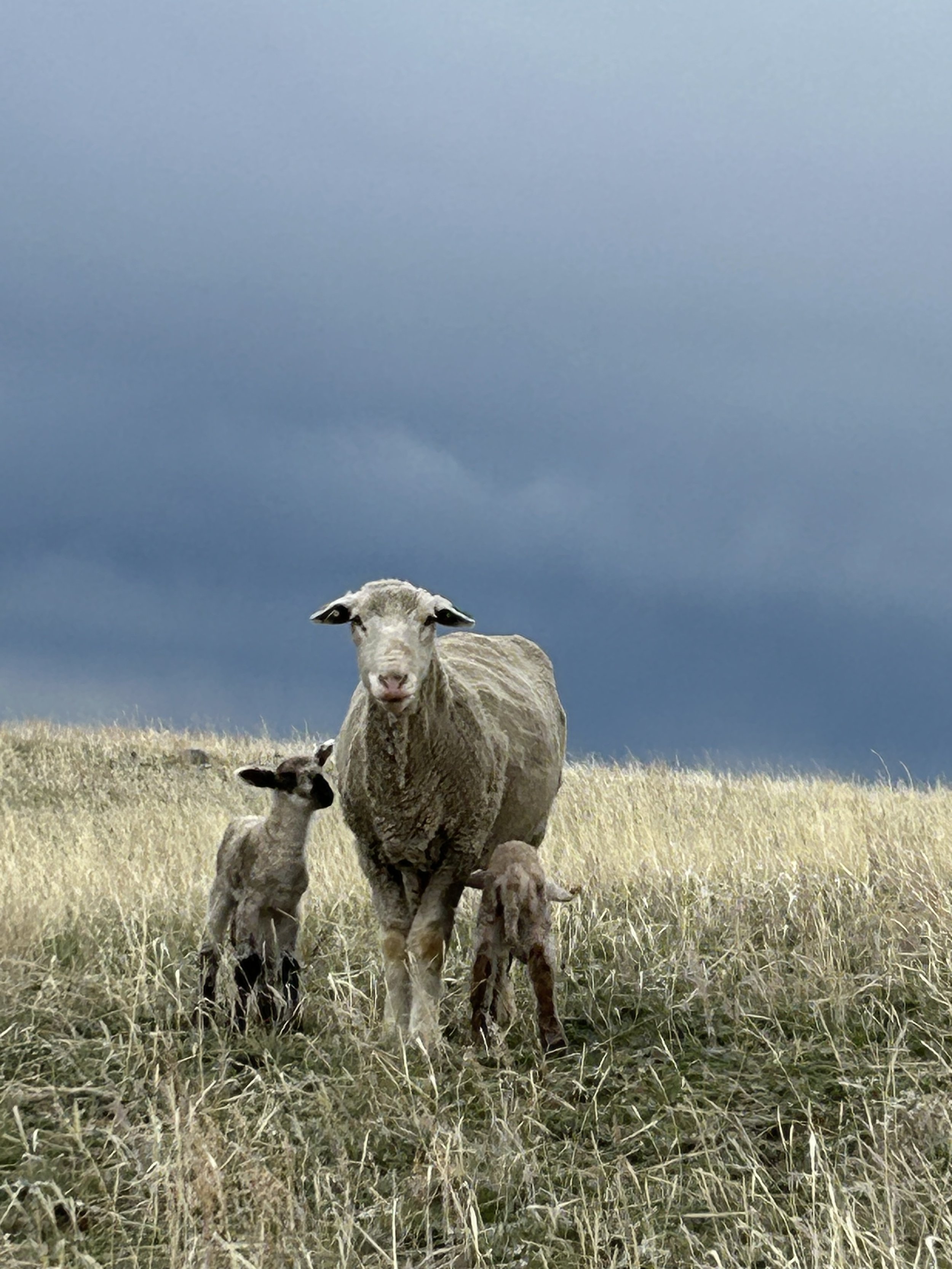Sounds Sheep Speak
Dawn is quiet -- peaceful with anticipation.
As the sky lightens, an owl swoops back to her nest hidden in the tall spruce.
The silent sheep, bedded safely in the corral, are in no hurry to find breakfast.
Their extended bellies and bloated udders divulge impending births.
As I walk through the corral, waking the expectant mothers, they sigh and groan, struggling to stand.
A sheep’s sigh says a lot: Please be patient. I ache.
I ache for them.
The flock waddles up a steep hill to fresh pasture for the day.
I hear clicking as they walk, a sign of boron deficiency.
I make a mental note to add boron to their mineral.
The sheep are quiet as they flow through the gate. All of their energy goes to packing their heavy load.
In the afternoon, I check for the first newborns.
Sure enough, a ewe stands far from the flock, hunkering over two white specks in the green grass.
I send the rest of the flock toward the corral, my dog circling and gathering carefree, not-pregnant, bouncing yearlings mixed with laden ewes.
The yearlings jump, twist and bleat.
The ewes sway and sigh.
The flock out of the way, I turn back to the new mama.
Her family will be in a small bed-and-breakfast pen in the barn by nightfall.
The quality of communication between us will determine how quickly this half-mile trip is accomplished.
As I slowly approach, she mews a low baa. The lambs raise their heads at her warning.
I let the lambs follow the ewe. She purrs to them as they wobble behind her.
When they tire, I tuck them under my arms.
The ewe bleats her distress.
I show the lambs to her, hear her sniff each one.
As I carry the lambs toward the barn, I interpret the ewe’s mental state by her bleats, baas, and throat gurgles.
Throat gurgles are good – she is following her babies and knows they are safe.
A bleat means she can’t find them --I stop, set the lambs on the ground and let her see and sniff them.
A baa tells her lambs that she is coming.
The lambs answer with their own tiny, high-pitched bleats.
A silent ewe behind me is dangerous.
She is probably planning a sneak head-butt to the back of my knees.
If she knocks me to the ground, I might let lambs fly, land on top of one with a thud or roll with them on my belly and expose my core to a repeat attack.
I avoid the silent attack by turning to face the ewe in time to dodge her forehead coming at knee level.
I tuck the new family in for the night.
The chickens are roosting, with only an occasional chuckle from a hen.
The rest of the barn is silent.
Silent barns are good.
The next morning, another ewe has new twins.
She mutters to both of them.
One replies. The other is too cold to make a sound.
The ewe follows as I carry both lambs to a pen in the barn, then place the cold lamb in my hotbox – an old ice cream freezer lined with wool and a heat lamp hanging above.
I have to clear out a few eggs first.
The chickens have been laying eggs in the hotbox for a month without consequence.
The chilled lamb mews when I turn on the heat lamp – a good sign.
When I come back a couple of hours later, a chicken lays on top of the lamb, resisting change.
She squawks when I chase her off.
She leaves her egg.
Without a word, we all speak.
